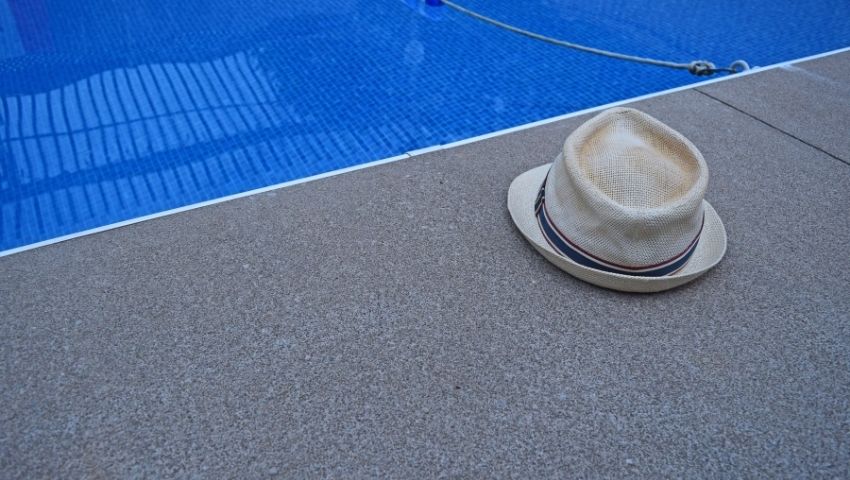Summer times are best enjoyed by the pool. But as we ‘dive into’ the pool season, it’s also important to give our pool deck surfacing a critical inspection. When enjoying some outdoor recreation time with loved ones, the last thing we want is an accident or a serious injury owing to a faulty pool deck.
Watch out for the below-mentioned signs to decide whether or not your pool deck needs resurfacing. This simple exercise will help you prevent damages that otherwise compromise the safety, longevity, and aesthetics of the pool.
1. Visible Signs of Wear
The top sign that your pool deck’s demanding resurfacing is when you see visible signs of wear and tear. Chips, blemishes, and cracks on the pool deck surface aren’t just unsightly but also compromise the overall safety of the deck and the integrity of the structure.
Here are a few signs of aging deck surface you should watch out for –
– Scaling
A brittle surface that’s scaling or flaking is weak and ugly to look at. Being rough and uneven, such surfaces are tough to walk on bare feet.
A non-abrasive and non-slip surface like rubber is great for walking around barefoot around the pool. Rubber surfaces are smooth and prevent cuts and other injuries that may occur when pool users move around with wet feet.
– Stains or Discoloration
A few surfaces like concrete are porous; so, in case of a spill, there’s a high chance of it leaving an ugly stain or a discoloration on the surface. Stains are harmless; yet, they reduce the aesthetic value of the area.
If the discoloration bothers you, it’s time to consider a pool deck resurfacing.
– Overheated Surface
With age, pool deck surfaces tend to lose their finishing or protective coating, exposing the concrete subfloor to the sunlight. This results in the surface turning too hot for anyone to walk around barefoot.
If your pool deck surface is overheating, it’s time to consider adding a protective layer on the concrete surface, thereby keeping it cool enough to walk on.
If you see such damage get in touch with your local pool deck resurfacing expert to get your pool to look great again.
2. Hairline Cracks on the Surface or Crumbling of the Cement Foundation
Outdoor structures suffer from the issue of the soil settling in the ground underneath. Moreover, several environmental factors impact the foundation’s stability. This may show up as hairline cracks at first and further lead to fissures in the foundation. Eventually, the cement begins to crumble and sag.
Weather and age often take a toll on the pool deck’s foundation, causing it to sag. A sagging foundation deepens the cracks, thereby inviting termites and speeding up the deck deterioration.
Such signs are tough to ignore as they can lead to tripping hazards and negatively affect the integrity of the structure. Further, an unsightly and misaligned foundation reduces the property’s real estate value.
If you see signs of the pool foundation sinking or the deck surface going spongy, it’s time to work towards preventing further damage.
3. Slippery Walkways
A slippery pool deck surface can pose a serious safety hazard for people using the space, especially seniors and kids. A slippery surface has lost its traction, thereby increasing the chances of a fall injury.
When you see people slipping or tripping when using the pool deck, it’s time to schedule a resurfacing service right away. Most pool owners in the US opt for wet-pour rubber surfacing as rubber is known to have a high coefficient of friction. This property of rubber gives the surface just the right traction even in wet conditions.
Moreover, rubber is springy and shock-absorbing; hence, it reduces the impact of a fall, making it a safe and effective surface for pool decks. If you are looking for an anti-skid and safe surface for your pool surroundings, get in touch with River Rock Resurfacing. Our team of experts will inspect your pool and guide you through your pool deck resurfacing project.
4. Rotten Foundation
Most modern pool decks are constructed with concrete footings and material like rubber that’s impermeable to moisture. This stops the moisture from getting into the foundation.
However, old decks made of wooden boards tend to rot when water gets in and the deck isn’t maintained properly. This can cause issues like mold and mildew that gradually weaken the foundation.
Therefore, we recommend opting for a surface that naturally repels moisture and is inhospitable to pathogens like bacteria, viruses, and fungi.
5. You Want to Boost Your Property Value
Another big reason you should consider resurfacing your pool deck is when you want to sell your house or boost its real estate value. A damaged and unsafe deck significantly reduces the value of a residential property. Resurfacing can improve your home’s curb appeal, attract potential buyers (in case you are planning to sell your house), and impress your neighbors and guests.
What’s the Best Surface for Pool Decks?
A swimming pool deck needs a durable, high-traction, and non-abrasive surface like poured-in-place rubber surfacing. The seamless anti-skid surface is safe to walk on and can be customized to suit the pool owner’s requirements. Further, rubber surfacing is available in a wide variety of colors and textures to improve the aesthetics of your pool.
Summing Up
Swimming pools exist to offer a fun and refreshing experience to people of all ages. However, a faulty pool deck surface holds several hidden dangers that can ruin your experience.
Keep an eye out for the aforementioned warning signs of an unsafe pool deck surface. If you spot any of these, get a resurfacing expert to give your pool deck a new look.

